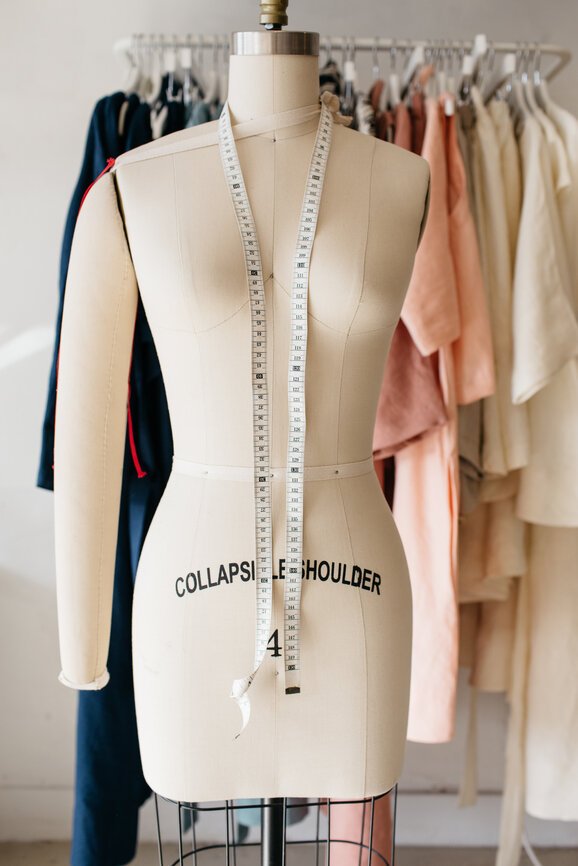
What Is Sustainable Living?
A Practice For The Planet & Its People
Sustainability has all the trappings of a “buzz” word. You’ve heard it encouraged by global organizations, bloggers, artisans, and environmental activists alike. And if you’re a fan of The Good Trade, you’ve seen it all over our site, too. More than a buzz word, though, it can be a personal philosophy that greatly benefits the larger public.
Sustainable living means we prioritize the use of natural and renewable resources instead of creating excess waste and depleting environmental resources for future generations.
“Sustainable living means prioritizing the use of natural and renewable resources.”
The History of Sustainability
The term is believed to have first been defined and popularized by the now-dissolved World Commission on Environment and Development in its 1987 report, “Our Common Future.” (It eventually came to be known as The Brundtland Report after the Commission’s chairwoman, Gro Harlem Brundtland.) Published by the United Nations through the Oxford University Press, the document aimed to present environment-related concerns in the context of political development. And in it, sustainable development is explained how we largely still recognize it today, as: “Development that meets the needs of the present without compromising the ability of future generations to meet their own needs.”
That sentiment has since been embraced and echoed by existing agencies:
“To pursue sustainability is to create and maintain the conditions under which humans and nature can exist in productive harmony to support present and future generations.” — The United States Environmental Protection Agency
“Incorporating sustainability into your lifestyle means becoming aware of the impact of your choices in food, products, and energy use.” — The Centers for Disease Control and Prevention
“[A sustainable world] is a place where there is no poverty or hunger, and everyone has equal access to clean water, education, health care, and the opportunity to pursue satisfying work with fair compensation. Energy is clean, communities husband their resources carefully, and consumption is responsible. Conservation dictates both land and water use, and everyone is committed to fighting climate change.” — UNICEF USA
Some Statistics About Sustainability
In our day-to-day, living sustainably means being cautious and conscious of how we interact with our home appliances, commutes, shopping trips, and more. It means curbing our habits of expending, whether that be money or energy, in order to protect and improve our environment. It’s recognizing that some resources are finite. Otherwise, continuing to consume at untenable rates will exhaust our earth.
“Living sustainably means curbing our habits of expending in order to protect and improve our environment.”
According to the UN Environment Programme, if the global population reaches 9.6 billion by 2050, we could need “the equivalent of almost three planets…to provide the natural resources needed to sustain current lifestyles.”
As of publish, 1.3 billion tons of all food produced is wasted every year, and the natural resource base to supply food is being threatened by overfishing, land degradation, and more. Humans are polluting the world’s freshwater supplies faster than nature can purify them, and excessive use of water is contributing to global water stress. And household energy usage is contributing to 21 percent of consequential CO2 emissions. The UN Department of Economic and Social Affairs has 17 Sustainable Development Goals (SDGs) and they all focus on the peace and prosperity of the planet and its inhabitants, including clean water and clean energy, responsible consumption and production, climate action, and animal life on land and underwater.
A Beginner’s Guide to Living More Sustainably
Even without intention, many of us are beginning to live more sustainably every day. Remember the widespread ban of plastic straws in restaurants and plastic bags at grocery stores? That was just the beginning. To practice it on a greater scale and use it to inform your everyday actions, here are a few easy ways to start.
1. Use Less Energy
More than just turning off the lights when leaving a room or unplugging appliances that are not used daily, consider swapping your bulbs for energy-efficient ones and switching to a smart thermostat to more accurately detect and auto-balance your home’s temperature. When possible, hang dry clothes and cook without using the oven, stove, or microwave. And take shorter showers with cooler water. (To estimate your household’s carbon footprint, the US Environmental Protection Agency has a calculator.)
2. Create Less Waste
“Use alternatives to paper goods.”
Try meal-planning or seasonal eating to avoid accumulating excess food that will ultimately go to waste. Use alternatives to paper goods, like washable cloths instead of paper towels or a bidet instead of toilet paper. And take inventory of your personal products to discover which are available without single-use packaging, like refillable deodorants, toothpaste and mouthwash tablets, or shampoo and conditioner bars. While you’re at it, get a reusable water bottle for plastic-free hydrating.
3. Travel More Consciously
When distances allow, keep your car’s engine off and walk, bike, or take public transportation. For trips to nearby destinations, consider if a train can get you there. And when taking to the sky, opt for direct flights when possible and look for airlines that are implementing carbon offsetting (like JetBlue). You can even purchase your own offsets in advance of traveling to compensate for the emissions created and direct the funds toward projects of your choice. (CoolEffect and Sustainable Travel International can assist with this.) Once you arrive, you can look for eco-friendly lodging.
4. Shift The Way You Shop
“If and when you shop, do so with intention instead of impulse.”
If and when you shop, do so with intention instead of impulse. If you’re in need of new clothes, try thrifting and starting a capsule wardrobe comprised of biodegradable fabrics, like linen. (Here are some tips on how to thrift online—via our favorite shops—and in-person, as well as how to avoid thrift fatigue.)
If you have too many clothes, repurpose them into cloths and crafts or resell them to someone who shares your style. The textile recycling process is complicated, so if you’re planning on donating, do so directly to those in need instead of through major retailers with unclear methods. (Still, keep in mind that millions of tons of textile waste end up in landfills because there isn’t enough demand for the surplus of donated clothing, so shopping less is simply best.)
Even when shopping for items other than clothes, look for fair trade certifications to ensure that the pieces were created in conditions that were safe, empowering to their artisans, and protective of the environment.
5. Hold Corporations & Governments Accountable
Conscious consumption can mean buying more from brands whose values align with our own, and buying less—or nothing at all—from the ones that don’t.
“We have to reduce consumption, not redirect it.”
But as sociologist Emily Huddart Kennedy tells Vox, “The idea of ‘shopping’ your way to sustainability is fundamentally flawed.” We have to reduce consumption, not redirect it. And more than just being mindful of how and where we spend our money, we have to do the same with our time and effort.
Our personal choices will certainly impact our home, but they may fail to take the more powerful changemakers to task. So here are a few ways to do just that:
Join a CSO (Civil Society Organization): To support civil societies in holding their governments accountable when it comes to those aforementioned Sustainable Development Goals, international coalition TAP Network has created a SDG Accountability Handbook. It suggests over 14 approaches for citizens to take, including both informal processes (like engaging with the media and hosting public outreach campaigns) and formal ones (like contributing to voluntary national reviews and pursuing law reform). For each approach, it provides practical, step-by-step guidance on executing it, from how to conduct a community focus group to how to determine whether or not a government’s actions violate the law.
Collect Data: In order to see the SDGs achieved, Dhananjayan Sriskandarajah, Chief Executive of Oxfam GB, says that civil society must act as a watchdog. To do so, he suggests we collect and measure progress through data, and points to citizen-monitored data collection platforms like Dive Against Debris as an example. “If we are to have any hope of achieving the new vision, robust new metrics, fed by nothing less than a data revolution, will be essential,” he writes. If you’re interested in collecting data for an environmental concern within your community, like air or water quality, the EPA offers resources.
Support Eco-Friendly Advocates: “Vote with your dollar” takes on new meaning when we put our monies toward policymakers and not just products. Vote for and donate to leaders who prioritize the environment over corporate profit. On both national and local levels, look for candidates who are proposing green initiatives with proposals to back them up and then cast your ballots accordingly.
“Vote for and donate to leaders who prioritize the environment over corporate profit….Look for candidates who are proposing green initiatives.”
If you’re curious about your current carbon footprint, the Global Footprint Network, UK World Wildlife Fund, and Clever Carbon offer quizzes that take into account your food, transportation, home, and purchasing habits. And for even more ways to live sustainably, Curbed has created a gorgeously colorful and categorized guide with 101 tips.
Sustainable living is a lifestyle, practice, and philosophy. And in the face of an increasingly threatened and rapidly degenerating earth, it can often feel as if a single human’s small choice can’t make a big enough change. But it’s the accumulation and transmission of these choices—from opting for reusable face wipes to calling your local representatives—that can make all the difference. Start with yourself and then share what you’ve learned. Start in your home and then expand into your community. Make it a habit instead of a fad and you’ll feel like you’re contributing to not just any cause, but the most essential one.
How have you embraced or advocated for sustainability? 🌎 Share in the comments below!
Danielle Cheesman was born and raised in New Jersey, where she lived until moving to Philadelphia to study journalism at Temple University. She has spent her years writing and developing editorial visions for music, art, and lifestyle brands. Now residing in Los Angeles, you can usually find her taking pictures, making playlists, or cuddling her pup. Say hi on Instagram!




